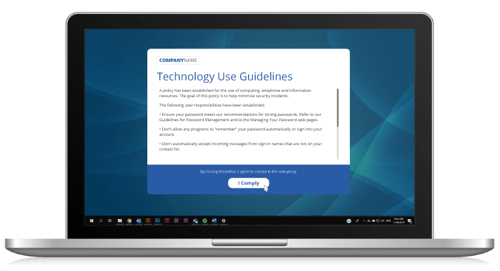
COVID-19 has touched everyone. From the workers whose jobs have been lost to the businesses whose operations have been crippled, and the sectors weakened under the strain, no one has escaped its influence. Yet as 2020 approaches its final quarter, for many, the situation is getting worse.
While the solution isn’t yet clear, the advice is: “It is only our collective action that will generate the change necessary to regain control of this epidemic.”
That’s the foundation of a new publication from The Johns Hopkins Center for Health Security. The report, titled Resetting our Response: Changes Needed in the US Approach to COVID-19, makes a number of recommendations around essential steps required to stop the spread of COVID-19.
For business leaders and management teams, these recommendations provide valuable insights to keep their workplaces and employees safe. Effective communication is the enabler – using internal communication channels to improve behaviors, minimize risk and strengthen business resilience.
These four key recommendations from Johns Hopkins, combined with SnapComms expertise in delivering over 1 billion messages, show how you can best leverage your internal communications capabilities during COVID-19.
Recommendation #1: Encourage non-pharmaceutical interventions
Following correct hygiene practices must be the focus of every community and every business. Physical distancing, hand hygiene, avoiding large gatherings, sanitizing surfaces and staying home if unwell are basic precautions which are simple to perform – but can be challenging to implement.
Your internal communication channels can build awareness of key messages, engage employees with content and promote correct behaviors.
Company Screensavers are seen throughout the day, ideal for reminding staff of important health and wellbeing messages in a highly-visual format that gets their attention.
Manage access to shared meeting spaces and control attendee numbers through scrolling newsfeed updates or pop-up notifications at the beginning of each day.
Consistency of messaging is key. The same message, delivered regularly, will see a faster take-up by employees and a greater likelihood of reducing any risk to the health of your workforce.
Recommendation #2: Close higher risk settings and reinstitute stay-at-home orders
Control measures like employees working from home will help stop transmission of the virus. This is especially important in business environments where people congregate, like frontline retail, call centers or corporate offices.
Internal communication channels can ease employees transitioning to working remotely and reduce disruption to business performance.
Use messaging to provide best practice tips for maintaining employee health and wellness, staying productive in a home office and encouraging a positive mental attitude.
Ensuring all staff are kept in the loop and collaborating effectively is critical. Share updates on the current company situation and important leadership messages in video alerts.
Connecting and supporting employees is a key area internal communications can help your business – wherever your employees are working.

Recommendation #3: Scale up contact tracing and continue to improve performance
Contact tracing has proved invaluable for tracking the movement of people and slowing the spread of infections. Where traditional contact tracers can’t keep pace with the high numbers of COVID-19 cases, technology has stepped up in the form of hundreds of contact tracing apps.
But as infection numbers rise in the wider community, internal communication channels can support essential contact tracing for businesses.
Employee surveys deliver daily health check surveys via hand-held tablets or interactive digital boards. Before entering their workplace, employees complete a short questionnaire on how they’re feeling, what symptoms they may be displaying and any recent health advice they have received.
Employees who report symptoms are disallowed access and made to stay home – stopping any potential infection at the door.
Recent research reveals that employees are more concerned about safety than privacy when it comes to the coronavirus. Combining technical expertise with human oversight in this way improves the reach and speed necessary for successful contact tracing programs.

Recommendation #4: Develop policies and best practices to better protect institutions
Businesses most at risk are those without the resources or know-how to best protect themselves. This includes physical protections and legislative experience – as well as the internal communication platforms and strategies to effectively inform and engage their employees throughout the COVID-19 crisis.
Platforms like SnapComms help protect organizations of all sizes and sectors by providing pre-configured message templates with ready-to-use content. Employers can make use of these for a range of communication needs.
One example is improving employee compliance with COVID-19 policies. Templated messages achieve 100% compliance, giving employers assurance that staff are committed to abiding by essential guidelines and regulations.
High-need but resource-poor organizations can improve their resilience against COVID-19 by using these message templates and customizing them to their needs.

Want to see how these message templates could help your organization?
Try them for yourself with a free 30-day trial of SnapComms.
While some countries are beginning to get the COVID-19 virus under control, many more are not. Infections continue to rise. Second waves are striking Europe, Asia and elsewhere. Overworked hospitals are under huge pressure. Sectors like business, education and tourism are witnessing devastating downturns.
In times like this, internal communications is a business tool for much more than simply keeping staff informed – it’s an essential defense to keep everyone safe.



